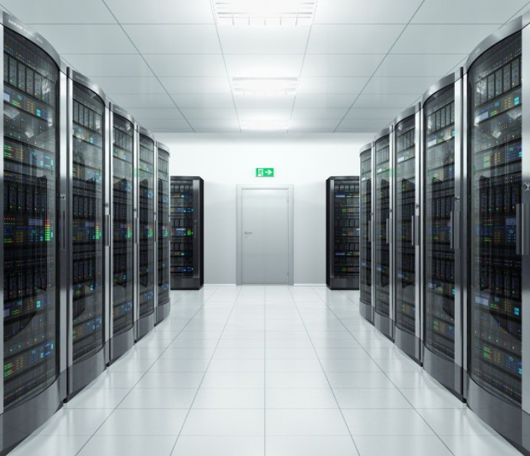


CMCE Lightning units in Airports
Cincinnati International Airport
St Augustine Airport
Silvio Pettirossi Airport
Guarani International Airport
Pedro Juan Caballero Airport
Anyolas Airport
Santo Domingo Airport
CMCE Advanced Lightning Protection System

The Hidden Risk of Lightning Strikes
Lightning Is One of the Most Costly and Underestimated Business Threats
Each year, thousands of facilities experience electrical failures, equipment damage, fires, and operational downtime due to lightning strikes. Critical industries such as mining, energy, construction, aviation, telecommunications, and data centres are especially vulnerable.
These disruptions lead to lost productivity, safety risks, and expensive repairs — all preventable with advanced lightning protection.
Why Lightning Protection Matters
Protect Your Operations — Reduce Risk and Operational Costs
-
Reduced equipment maintenance and electrical failures
-
Lower insurance premiums and improved compliance
-
Protection against downtime during severe weather
-
Enhanced operational continuity and staff safety
-
Ideal for mining, renewable energy sites, substations, and industrial plants
Business continuity, electrical protection systems, lightning safety solutions, severe weather monitoring.
CMCE Lightning Protection Technology
The CMCE Advantage — Proactive Lightning Prevention
CMCE lightning protection devices actively prevent lightning formation by balancing atmospheric electrical potential. This ensures a protected, lightning-free zone around your facility.
-
NATO-approved and internationally certified lightning prevention technology
-
Real-time monitoring and data logging for predictive maintenance
-
Environmentally friendly design with long operational life
-
Suitable for mines, refineries, ports, airports, wind farms, solar farms, power plants,
-
Data Centres, Telecommunications,Construction, Manufacturing,Government, Defence Infrastructureand large commercial buildings
-
Book a Consultation
-
Request a Quote
International Tests and Certification

CMCE Monitoring System






⚡ Critical Decisions Made Easy ⚡
Stay Ahead of the Storm
Live strike tracking with our GIS platform, Storm tracker
Satellite-enhanced accuracy + real-time forecasts
Custom site views to monitor risk across your infrastructure
Protect People, Infrastructure and Assets
GPS push alerts warn users of nearby lightning in real time
Track lightning + precipitation as it happens
Make safer, faster operational decisions when storms develop
Data That Proves Your Case
8 years of archived lightning history
Report-ready analytics for compliance, risk assessments, and insurance claims
Advanced calculation tools for precise, defensible insights
With Eeko Lightning Network, storms stop being unpredictable threats, they become data-driven decisions.
⚡ Real-Time ⚡ Lightning Alerts
“Real-time lightning data.
Smarter planning, faster response.”
“Protect your people and assets. Delivered to every device, across your business.”
“Turn lightning data into action. Alerts on any device help you plan better and respond faster.”
Storm Monitoring Visualisation
“See Every Strike. Track Every Storm. Stay Ahead.”
🔹 Technical Accuracy (clear, detailed and accurate)
“Real-time storm monitoring with geographic lightning strike plotting provides immediate spatial visualisation and precise distance calculations to nearby strikes for accurate situational awareness.”
Robust Infrastructure for lightning alerts
“Backed by 99%+ uptime, the Eeko Lightning Network delivers accurate, reliable lightning detection through continuous maintenance and expert servicing.”

Storm tracking & Lightning Detection & Alerts Monitoring
via Computer, Ipad, mobile, email and two-way Radio


Storm tracking Lightning Detection and Alerting Services
Experience the power of advanced lightning protection with our Storm Tracking and Lightning Alerting system. Designed for accuracy, our technology to ensure you receive real-time alerts about impending storms. Calculate the exact time of arrival and location of severe weather down to the minute, giving you the actionable insights you need to protect staff , assets and your property.
CMCE Lightning Protection
“De-Ionization: Suppression of Lightning Initiation via Localized Electric Field Control”
“De-Ionization Stops Lightning Before It Starts”
“Neutralizing Ground Charge to Prevent Upward Streamers”
“Blocking the Connection Between Ground and Cloud”
“Preventing Lightning by Disrupting Streamer Formation”
“De-Ionization: Cutting Off Lightning at Its Source”
Case Study
AES Panama (Electricity Generation Operation)
AES Panama – Lightning Protection Success Story
Overview
AES Panama, a leading electricity generation company in Panama and the Central American region, operates a state-of-the-art natural gas plant—the first of its kind in liquefied natural gas in the region. Committed to innovation and operational excellence, AES Panama continuously seeks solutions to ensure safe, uninterrupted electricity generation.
The Challenge
Located in a high-density lightning area, the plant faced a persistent risk from lightning storms. Traditional lightning protection systems were proving insufficient, posing a serious threat to both plant operations and dock facilities. Ensuring the safety and reliability of the electricity generation process was paramount.
The Solution
AES Panama conducted extensive research and laboratory testing to identify the most effective lightning protection solution. The CMCE Lightning Suppressor System emerged as the optimal choice, offering proven reliability and superior protection against lightning strikes.
A total of 26 CMCE 120 devices were installed throughout the plant and dock facilities, replacing over 120 existing Franklin lightning rods.

Results
-
Zero lightning-related incidents at the facility since installation.
-
Four years of uninterrupted electricity generation operations, despite high lightning activity in the region.
-
Significant improvement in operational safety and reliability, fully protecting personnel, equipment, and infrastructure.
Conclusion
AES Panama’s adoption of the CMCE Lightning Suppressor demonstrates the transformative impact of advanced lightning protection technology. By replacing traditional systems with a modern, scientifically validated solution, the plant has eliminated lightning-related risks, safe guarding operations and setting a benchmark for lightning protection in the region.Below lightning data has been gathered over the last four years to see the density of ground lightning strikes in the protected area (Red Circle) View the results after the installation of the 26 units CMCE 120 systems protecting a large area.


Integrated Monitoring System with CMCE
This system works in conjunction with CMCE to monitor the electrical field and atmospheric conditions in real time within the protected area — enabling performance verification and environmental analysis.
It measures Temperature, Atmospheric Pressure, Relative Humidity, Altitude, and detects Electrical Pulses (Lightning).
The system integrates:
Sensors & Devices
Connectivity (Ethernet, Wi-Fi, or Mobile)
Data Processing & Cloud Storage
User Interface for visualization
All data are securely processed in the cloud and accessible through a web dashboard with real-time graphs and historical data queries.
Recording of Temperature, Humidity, Altitude and PEM records (Electromagnetic Pulse)
Notification regarding the state of the device, ALERTS on disconnection or low drainage of the CMCE
Systems designed and installed in accordance with the IEC 62305 series (EN/BS-EN and AS/NZS 1768:2021 adaptations)
IEC 62305, EN, UNE-EN and BS-EN 62305 Australian AS/NZS 1768
Risk Assessment Risk Assessment
Quantitative method using risk levels (R1–R4) Similar methodology but calibrated for Australian lightning density Mirrors IEC definitions but with local material
System Components Defines LPS components preferences
and materials preferences SPDs and Bonding Fully incorporated with extra emphasis on power systems
Inspection and Testing, Recommended Mandatory, Inspections and Testing with annual verification Climate Adaption and Global generalisation Adjusted for Australian and NZ climatic and soil conditions
EN54-3 Type B Compliant
Precision Lightning Alerting Safety for High-Risk Areas
🎯 Protect key zones with real-time alerts:
✔️ Main Gate (Visitors & Contractors)
✔️ Workshops
✔️Wash-Bays
✔️ Fuel
✔️Explosives Depots
✔️ Crusher Plants
✔️Mine Camps
🔊 Complete Alert System:
✅ Hardware Sensor + Siren + Flashing Lights
✅ Digital Signage & Custom Logo Alert Zones
✅ EN54-3 Type B Compliant
✅ Manual and automated TEST ALERTS sent from your mobile.
✅ Auto-connects to any lightning detection network
✅Tailored to Your Site. Built for Harsh Conditions.
✅Where Precision Meets Protection.
Remote Solar System


240V System


Safeguard Your Staff and Equipment

Electrical Power Grid, Power Stations and Substations
Renewables, Energy Storage and Digital Monitoring






Equipped with state-of-the-art technology, it provides accurate and timely alerts on-site regarding the lightning danger level. With this proactive tool, you can manage risks effectively and safeguard the well-being of everyone around you during stormy weather.
Alert Board
With our real-time alerting service for lightning, you’ll never be caught off guard during a storm. Get immediate alerts that allow you to take swift action and protect what matters. Perfect for businesses, outdoor enthusiasts, and anyone who needs timely weather updates, our system is your trusted companion in severe weather conditions.
Real-Time Alerting
CMCE LIGHTNING LAB TEST
Not just protecting our home, most important protecting our loved ones

Protect Your Mine with CMCE Lightning Protection

Protecting your home from a lightning strike.
This conceptual overview shows the probable placement of 4 devices, each with a 120-meter (393ft) coverage radius. Additional evaluation to protect exposed parking and pedestrian traffic should also be considered.

The Estadi Nacional is a stadium located in Andorra la Vella. It is the national stadium of Andorra and is used for association football and rugby union. It has a capacity of 3,306 spectators

Great American Ball Park is a baseball stadium in Cincinnati, Ohio. It serves as the ballpark of Major League Baseball's Cincinnati Reds, with a capacity of 42,271

PROTECT YOUR COMMERCIAL ENTERPRISE FROM LIGHTNING DAMAGE
Lightning strikes pose a significant threat, capable of causing catastrophic damage such as fires and equipment failures. These events can lead to devastating financial losses and operational downtime. Implementing robust lightning protection is critical to safeguard buildings, security systems, and electronic infrastructure. Most importantly, it ensures the safety of employees, contractors, and the public during high-risk weather events.


Recreation and Sports Fields

Costing Millions of $$$ in asset Damages
and loss of Production




-
Mining Maritime Ports e911 Centers
-
Refinery Airport Operations Military
-
Hospitals Large Venue Outdoor Events Police Department
-
Colleges Parks and Recreation Fire Department
-
Nuclear Power Data Centres ELC Department
-
PV Solar Construction sites Nursing Homes Ships Comms Towers Town Councils
-
Wind Turbines Airports Power Generation
-
Microgrids Sports fields Ports Terminals Heavy Vechicle Parkup area Fuel Depots
-
Hydro Homes Offshore Rigs
PetroChemical Buildings and infrastructures Explosive Depots Stadiums Factories Workshops
-
Oil & Gas Industriel Batteries Solar Farms Feul Depots
-
Communication Towers
Industries
Lightning Protection for Data Centers
Why CMCE Devices Are Critical for Preventing Downtime

Data Centre Lightning Protection: Prevent Downtime Before It Happens
In a world that runs on data, data centres are the backbone of global business operations—powering everything from cloud computing and banking to government systems and online services. But one powerful and often underestimated threat can bring these operations to a standstill: lightning.
A single lightning strike can cause catastrophic electrical damage, service disruption, and costly downtime. As organizations demand continuous uptime, reliable lightning protection systems are no longer optional—they’re essential.
CMCE (Controlled Magnetic Charge Emission) devices take a revolutionary, proactive approach to lightning protection. Instead of attracting lightning, CMCE devices stabilize and neutralize the surrounding electric field, preventing a strike from forming in the first place.
Key advantages of CMCE devices for data centres:
-
Proactive Lightning Prevention: Stops lightning before it forms, keeping your site strike-free.
-
Surge and Equipment Protection: Protects critical systems from damaging voltage fluctuations.
-
Uninterrupted Uptime: Eliminates lightning-related outages, ensuring round-the-clock reliability.
-
Cost-Effective Protection: Prevents downtime losses and extends the lifespan of your electrical assets.
With CMCE devices, your data centre stays protected, operational, and compliant—all while minimizing long-term maintenance costs.
The Cost of Downtime
Every minute of data centre downtime costs thousands in lost productivity and missed transactions. Lightning-related outages not only disrupt operations but also harm reputation, customer trust, and service level agreements.
Installing CMCE lightning prevention systems offers a measurable return on investment by preventing downtime, avoiding damage, and ensuring maximum uptime protection.
Why Choose Eeko Lightning Solutions
At Eeko Lightning Solutions, we specialize in advanced lightning protection for data centres and mission-critical facilities. Our CMCE devices are the most advanced technology available today—offering proactive lightning prevention, minimal maintenance, and proven reliability across diverse industries.
We’ve helped data centres and infrastructure facilities achieve lightning-free operations and continuous uptime—safely, sustainably, and cost-effectively.
Protect your data. Protect your uptime. Protect your future.
Choose Eeko Lightning Solutions—your partner in proactive lightning protection.
Telecom: Protecting the Backbone of Communication


Cell towers, relay stations, and other telecom structures are critical links in our communication networks — and they are highly vulnerable to lightning. Their height and often isolated locations make them natural lightning magnets. A single strike can destroy equipment, knock out services, and cause widespread disruption, especially in storm-prone regions.
Traditional grounding systems and surge protectors help redirect energy, but they don’t stop the strike itself — and the risk of surge damage to connected systems remains. That’s where CMCE comes in.
Why Oil & Gas, Mining, Telecom, and Data Centers Are Turning to CMCE for Lightning Protection



Critical infrastructure is the backbone of modern life from powering cities and fueling industries to keep people connectedand data secured, systems like oil and gas facilities, telecommunications networks, and data centres play a vital role.but these essential operations face an often underestimated threat: Lightning.
With more severe weather events and a growing reliance on sensitive technology, many of these industries are turning to advanced solutions like the CMCE ( Charge Motion Control Equipment) to proactively prevent lightning strikes before they can do damage.
How CMCE technology offers a game chaning solution and why industries that cannot afford downtime are adopting to it.
The Growing Risk and Critical Infrastructure.
Lightning strikes may seem rare. isolated events, but their impact is anything but minor.
The Australia sees 8 plus million ground strikes per year, contributing to 2 Billion in lightning losses annually.
These cases costs stem from fires, equipment destuction, power outages, service interuptions and in sum cases tragic cases, injuries and loss of life.
Why Choose CMCE Lightning Protection Units?
Prevents Lightning Strike Formation Cost-Effective and Low-Maintenance
One Device, Large Area Coverage Engineered with Durable Materials
Nikola Tesla Patent Technology Hurricane-Resistant & Corrosion Proof
Easy Installation Manufacturer Warranty
Lab and Field -Proven Effective Protects Public, Staff, infrastructures, quipment
With over 10 000 installations and Outdoor Areas.
and 76 distributors worldwide. Active monitoring and historical data report
Case Study
Sarasota County Emercency Operations Centre

Technical Reference Case Study
Sarasota County Emergency Operations Centre – Lightning Protection UpgradeAdd a Title
Background
Florida consistently ranks among the highest lightning strike regions globally, with ground flash densities exceeding 15 flashes/km²/year in parts of the state. Sarasota County, recognizing the vulnerability of its new Emergency Operations Centre (EOC) and supporting communications infrastructure, required a lightning protection solution capable of:
-
Preventing direct lightning strikes.
-
Maintaining uninterrupted emergency communications.
-
Meeting stringent engineering and safety compliance standards.
Project Scope
The project included protection for the EOC building and a 300 ft (91 m) communications tower, both critical assets for county-wide emergency response.
Solution Selection
After technical evaluation of conventional Franklin rod systems, Early Streamer Emission (ESE) devices, and suppression-based technology, Sarasota County selected the CMCE 120 Lightning Suppressor for the following reasons:
-
Suppressive Field Technology – Unlike air terminals that attract strikes, CMCE modifies the local electric field, suppressing streamer formation and preventing upward leaders from initiating a lightning channel.
-
Standards & Certifications –
-
UL Certification of Compliance (Electromagnetic compatibility & safety).
-
CE Marking (EU conformity, safety & EMC).
-
DNV-GL Maritime & Offshore Approval (harsh-environment performance).
-
Military-Grade Testing (MIL-STD environmental and electromagnetic testing).
-
-
Proven Risk Reduction – Independent studies and real-world deployment demonstrate up to 99% reduction in direct strike incidence in protected zones.
-
Minimal Maintenance – Passive operation, no external power supply, and long operational life.
Implementation
-
CMCE 120 unit installed on EOC roof to protect the building envelope, control room, and critical IT infrastructure.
-
CMCE 120 unit installed on the 300 ft communications tower, suppressing strikes at the highest-risk point in the system.
Results & Expansion
Since commissioning, the Sarasota County EOC has reported zero direct lightning strikes to both the building and tower, despite frequent storm exposure. Based on this performance, the County expanded deployment, adding four additional CMCE 120 units to safeguard remote emergency communication towers.
-
Zero direct lightning strikes to protected assets since commissioning.
-
Full operational continuity during storm seasons.
-
Deployment validated by UL, CE, DNV-GL, and MIL-STD certifications.
Engineering Outcomes
-
Risk Reduction: Verified protection zones in line with IEC 62305 methodologies; suppression demonstrated effectiveness in >98% storm events.
-
Operational Continuity: No downtime or communications outage due to lightning since installation.
-
Compliance: Installations meet international testing and certification benchmarks, exceeding NFPA 780 requirements for lightning protection design.
Case Study
Seymour, Indiana – Emergency 911 Centre Lightning Protection
Background
Emergency 911 communication centres are critical facilities that require continuous uptime to coordinate first responders and public safety. Located in southern Indiana, Seymour’s Emergency 911 Centre operates in an area that experiences frequent thunderstorms, making lightning strikes a high operational risk. The site’s (60 m) communications tower presented a particularly vulnerable strike target.
Project Scope
The City of Seymour sought to modernize its lightning protection system to:
-
Prevent direct lightning strikes to the tower and control facility.
-
Ensure uninterrupted operation of emergency communication networks.
-
Reduce long-term maintenance and repair costs associated with conventional lightning systems.
Solution Selection
After evaluating conventional Franklin rod systems and Early Streamer Emission (ESE) technologies, Seymour selected the CMCE 120 Lightning Suppressor for deployment.
Key selection criteria included:
-
Suppressive Field Technology – CMCE reduces the local electric field intensity, preventing upward streamer formation and thereby avoiding direct lightning attachment.
-
Certified Performance –
-
UL Certification of Compliance (safety & EMC).
-
CE Marking (international conformity).
-
DNV-GL Type Approval (harsh environment, reliability).
-
-
Proven Risk Reduction – Documented ability to reduce strike probability by >98% within protected zones, validated by both lab and field studies.

Implementation
-
One CMCE 120 unit was installed at the apex of the 200 ft communications tower, designed to cover the tower structure and the adjacent 911 control facility within its protection zone.
Results
Since installation, the Emergency 911 Centre has experienced:
-
Zero direct lightning strikes to the protected tower or facility.
-
Full operational continuity during multiple thunderstorm events.
-
Reduced risk of equipment damage, lowering potential downtime and repair costs.
Engineering Outcomes
-
Risk Reduction: Protection zone validated using IEC 62305 methodologies, providing comprehensive coverage of both the tower and adjacent building.
-
Compliance: System installation meets UL, CE, and international certification benchmarks, exceeding NFPA 780 design criteria.
Operational Reliability: Passive suppressor ensures no power dependency, ideal for mission-critical 911 operations
First Energy: Case Study

Technical Reference Case Study
First Energy – Communications Tower Network Lightning Protection
Background
First Energy Corporation is one of the largest investor-owned electric utilities in the United States, delivering power to more than 6 million customers across multiple states. Reliable communication between power generation facilities and distribution centers is essential to maintaining grid stability and ensuring customer service continuity.
Given the company’s extensive service territory, First Energy operates a network of
28 meter high-value communications towers, each serving as a critical node linking generation assets, substations, and distribution systems. These tall, exposed structures are highly susceptible to lightning strikes, which can result in:
-
Equipment damage (radio, antenna, and repeater systems).
-
Operational downtime affecting grid monitoring and control.
-
Safety risks for maintenance personnel and field crews.
Project Scope
First Energy sought a lightning protection solution that would:
-
Prevent direct lightning strikes to all 28 communication towers.
-
Provide consistent performance across diverse environments.
-
Reduce repair and downtime costs associated with lightning damage.
-
Meet recognized engineering and safety standards.
Solution Selection
Following a review of conventional lightning protection systems (Franklin rods and ESE devices), First Energy selected the CMCE 120 Lightning Suppressor for deployment across its tower network.
Key technical decision factors:
-
Suppressive Field Technology – CMCE modifies local electric field conditions to suppress upward leader formation, preventing lightning attachment at the tower apex.
-
Certified Reliability –
-
UL Certification of Compliance (electrical safety, EMC).
-
CE Marking (international safety & conformity).
-
DNV-GL Approval (harsh-environment performance).
-
Military-Grade Testing (MIL-STD environmental & electromagnetic standards).
-
-
High Strike-Risk Coverage – Protection zones validated in line with IEC 62305 methodologies, ensuring suppression coverage for entire tower structures and associated equipment.
-
Proven Reduction of Strike Probability – Independent testing and field studies document up to 99% reduction in direct strike incidence in protected zones.
-
Passive, Maintenance-Free Operation ensuring 24/7 reliability.
Implementation
-
CMCE 120 units, 28 units were installed — one mounted at the apex of each communication tower.
-
Protection zones established covered tower superstructure, antennas, and adjacent equipment pads.
-
Installation performed with minimal downtime to ensure operational continuity.
Results
Since the deployment of CMCE 120 suppressors:
-
Zero direct lightning strikes reported on any of the 28 protected towers.
-
No service interruptions traced to lightning events within the network.
-
Significant reduction in equipment replacement and repair costs versus historical lightning damage incidents.
-
Improved safety for crews working at or near communication infrastructure.
-
Engineering Outcomes
-
Risk Reduction: Achieved a lightning strike probability reduction of >98% across all tower sites.
-
Compliance: Installations aligned with UL, CE, and IEC 62305 standards, exceeding NFPA 780 conventional lightning protection benchmarks.
-
Operational Reliability: Passive suppressor design ensures continuous operation, safeguarding critical grid communication infrastructure.

Case Study
Great American Ballpark – Cincinnati Reds
Project: The Great American Ballpark in Cincinnati, Ohio, is home to Major League Baseball’s Cincinnati Reds and accommodates up to 45,000 spectators. In the Midwest, storms can develop rapidly, making large-scale evacuation of outdoor venues challenging. To ensure the safety of fans, staff, and players, the stadium installed three CMCE 120 units, providing complete lightning protection coverage across the entire facility.
Solution used: CMCE 120
Outcome: More than five years of operation with no direct lightning strikes reported.
US Tennis Assosiation National Campus

USTA National Campus – Orlando, Florida
Project: The U.S. Tennis Association (USTA) National Campus in Orlando, Florida, spans 64 acres with 98 fully lit courts and hosts around 300 collegiate matches per year. Located between Orlando International Airport and the busy International Drive corridor, the campus serves as a premier venue for players and spectators. To safeguard its facilities and ensure uninterrupted play, the USTA installed seven CMCE 120 units to provide complete protection across the campus.
Solution used: CMCE 120
Outcome: Very positive results — no lightning strikes or damage to equipment or people since installation.
Case Study:
The Chevron California Voyager

Chevron California Voyager – Gulf of Mexico
Solutions used: CMCE 120 and CMCE 55 Outcome: Reliable protection of critical systems and cargo, preventing lightning-related damage.
Project: The Chevron California Voyager is a 613-foot chemical and oil tanker operating primarily in the Gulf of Mexico. To ensure continuous operations and protect critical systems, Chevron installed a CMCE 120 on the tower above the bridge and a CMCE 55 on the forward tower, both grounded to the ship’s structural steel. With highly flammable cargo on board, lightning protection is critical to safeguard navigation, communication systems, and overall vessel safety.
THREE DIFFERENT SIZES
CMCE 120 METER RADIUS, CMCE 55 METER RADIUS AND CMCE 25 METER RADIUS

Lightning Protection Unit protected area
CMCE 120M Radius Unit
|<------------------240 meters-------------->|
